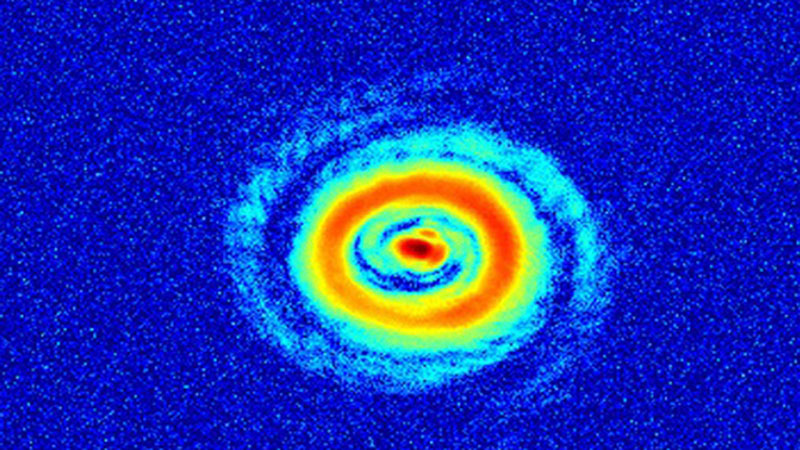22 Dec 2016
Professor Daniele Faccio, leader of Heriot-Watt’s Extreme Light Group, is putting Sir Roger Penrose’s superradiance theory, still unproven, to the test.
Black hole superradiance is the scattering of waves from a rotating black hole. If light or gravitational waves hit a rotating black hole, some of the energy will be absorbed. The rest of the waves will be scattered and amplified, resulting in much more light or energy at the expense of the black hole’s rotational power. Or so Penrose theorised.
Professor Faccio and his team are using an unusual fluid to recreate black hole conditions: light.
Nobody has ever attempted to experimentally investigate the underlying physics of Penrose’s theory of superradiance, which could shed so much light on the hydrodynamics of water vortices and laser beams.
Professor Daniele Faccio
Light propagating in a special medium, such as glass or methanol, can behave as a fluid, or even a ‘superfluid’. The team at Heriot-Watt is building upon highly developed photonic technologies, to produce precisely tailored experiments that allow them to watch light’s interaction with rotating vortices for the first time.
Professor Daniele Faccio said, “Nobody has ever attempted to experimentally investigate the underlying physics of Penrose’s theory of superradiance, which could shed so much light on the hydrodynamics of water vortices and laser beams.
“Observing the amplification of waves in water and fluids of light is an important step forward in how we understand curved spacetimes.
“We’ve been able to recreate the action of black holes as a desktop experiment: the vortices we’ve created so far could fit in your hand.”
Professor Faccio is working in partnership with researchers at the University of Nottingham to investigate black hole superradiance. The project was funded by the EPSRC.















